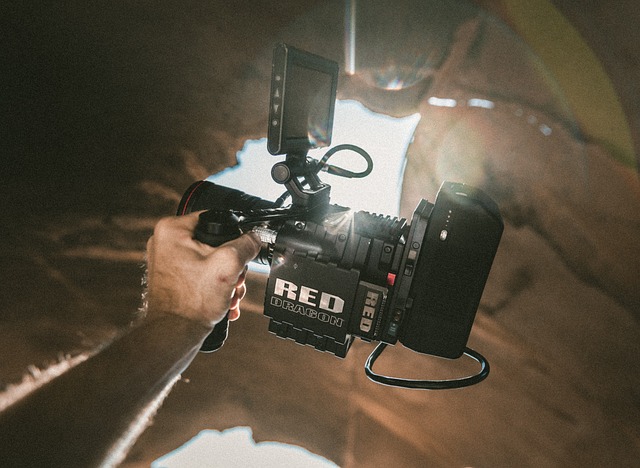A producer’s job is never finished, even after their movie has a definitive, final cut. But it does have a start—at the very beginning of pre-production, the work on a film before principal photography. And a smart producer will make sure they are making the most of this crucial time from day one. Especially when dealing with low budgets, every decision and every penny count. Here then are 12 things a producer can do during pre-production to best ensure a smooth, worthwhile film.
1. Start Saving Money

This applies to the producer, the director, and anyone else with a personal stake in the production. In a world where many artists and filmmakers live paycheck to paycheck, saving up a decent sum of money can take a long time, so start as soon as you know you have a project somewhere down the line. By saving up enough to cover at least a few months of rent and bills, you can then focus full time on the project without having to work a day job. You’ll also probably need some start-up cash to get the ball rolling on your project, just to get it to a point where you can start wooing investors.
2. Hire a line producer if you’re not micromanaging the budget
Film budgets, even for low-budget independent films, are both vitally important and incredibly complex. Unless you plan on having total control over the budget yourself, you will most likely need to someone to manage it for you, creating a proper breakdown of all costs and resources to the letter. Not only is this key to keeping track of a complicated film set, but essential to convincing potential investors that you have your head on your shoulders and are running a professional, competent project.
3. Hire a Lawyer
Find a lawyer willing to work within your budget, and willing to work for your budget. Having someone who knows their stuff, legally speaking, will help prevent any unforeseen expensive disasters when it comes to contracts, agreements and other paperwork.
4. Pick your format
Obviously, shooting digital is far cheaper than shooting on film these days. Choosing what you’d like to shoot—HD? 4K? 48fps?—as early as possible will help you start setting your budget sooner and more accurately. Choosing a more outdated format has its advantages as well; many production companies, film schools and individuals have stockpiles of outmoded technology they will be willing to give away at a sizable discount. If you are willing to put up with the extra costs and insist on shooting film, finding supplies of older stock can also save you a lot of money. Older film is typically grainier than fresh stock—but that could be just the look you’re going for.
5. Find your equipment

As with your format, finding equipment at a discount will go a long way toward reducing costs. You may choose what type of camera to use based on what is best available. You can work out a deal with a school you’ve attended or worked at, or go in on rental (or purchased) equipment with another production, or have a business front the money in exchange for producing an industrial or commercial video for them.
6. Find your crew
Obviously you and the director want to find a crew that will best realize the vision of the project. However, sometimes it pays to be practical. A lot of freelancing DPs and sound techs will own their own equipment. If you’re torn between two candidates, it might be smart to go with the one who can save you some money. Negotiating salary is also a key step in this part of pre-production. Even if someone is the best, if they’re asking for money you don’t have, sacrifices might have to be made.
7. Find your casting director
Casting directors know what they’re doing, and it’ll take a load off your shoulders to have someone doing the grunt work of finding your perfect cast. More importantly, a casting director with a solid reputation will look great when you present your project to investors. (This also applies to finding your DP and crew.)
8. Storyboard!
It might seem odd to focus on storyboarding in the middle of non-creative pre-production work, but storyboarding will help with a lot more than setting the look for the film. Having a strict, detailed sense of what you’ll be shooting will help you get exactly what you require, whether its locations, lights, props, etc., and save you from having to spend money on extraneous elements you may never need. It will also keep you tight on schedule as you move shot to shot during production because producing rule #1 is and will always be Time = Money.
9. Get you insurance and permits out of the way
Acquiring insurance and permits can lead to a lot of red tape; it’s best to get it out of the way early. That way, if you hit any paperwork hiccups, you can have them resolved well before production starts, preventing any delays.
10 Find a caterer

This may seem trivial and silly, but it’s anything but. It’s indicative of an entire part of filmmaking that often gets overlooked—the little things. Finding a person or business to feed your crew may seem like a low priority when dealing with permits, insurance and expensive equipment rentals, but your cast and crew need to be fed, and if you overlook it until the last minute, any number of things can go awry. Giving yourself time to find the right caterer—someone close by, someone with a broad enough menu—will also help you find the best bargain available.
11. Lock your location
Get a great location scout. Get several, if you can. Look everywhere so that you know you didn’t miss the perfect spot that gives you everything you want for the lowest cost. Don’t just take into account how it looks on screen. Keep in mind traffic patterns, noise issues, potential problems with permits and insurance, and importantly, its distance to your crew, equipment, and, of course, your caterer. Travel costs rack up. Lock your location as early as possible so you can work on all of the above steps well before production gets underway.
12. Nail your lookbook
Your lookbook, or investment packet, should be as thrilling and as exciting as your project. Convincing potential investors to risk their own money on your artistic vision is a tough sell, and by hiring a graphic designer and offering as professional a lookbook as possible, you’ll show these investors you mean business. It can’t just look pretty, though—what’s inside counts as well. That’s where talented names—whether it’s your crew, your actor, or your casting director—come into play. And if you have everything else listed above taken care of—if you show your investors you’ve even considered the caterer—they will be much more likely to trust you with their money.
Learn more about production at the New York Film Academy Producing School.
